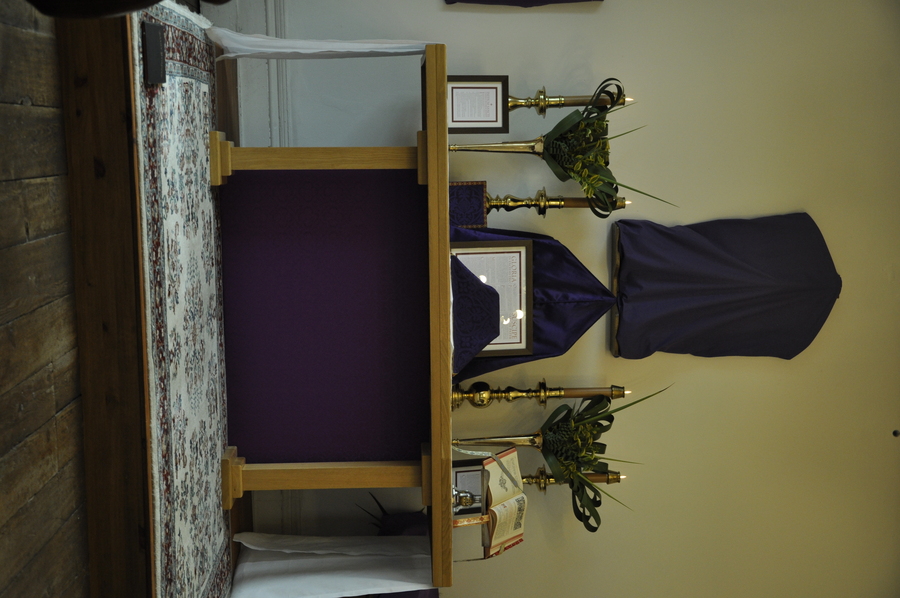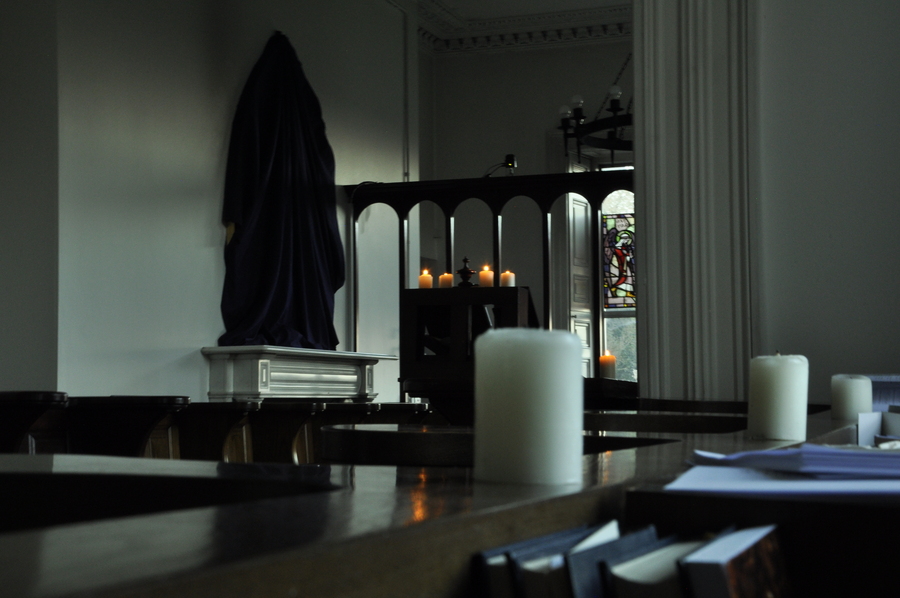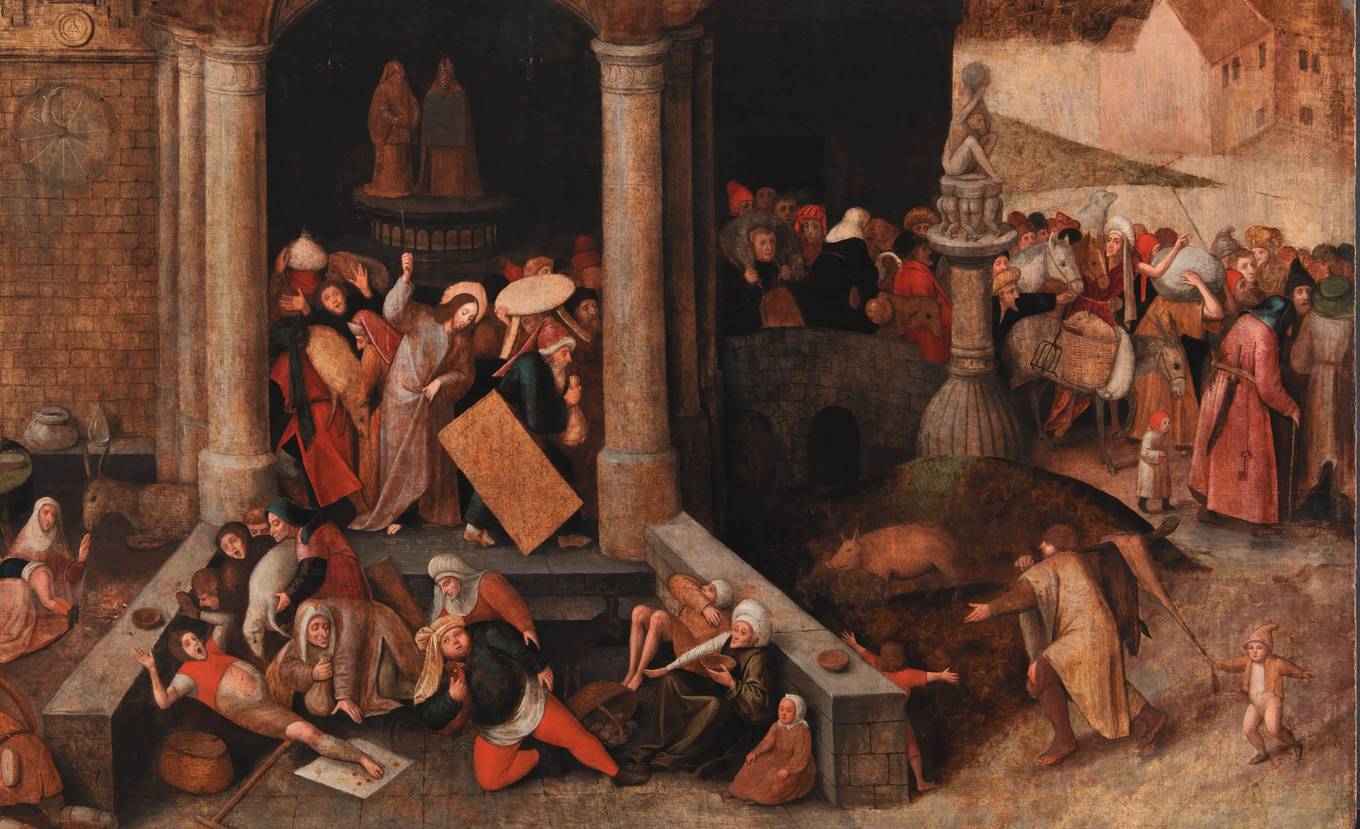Blessed Schuster’s Daily Thoughts on the Rule: Monday after the Fourth Sunday of Lent
Monday after the 4th Sunday of Lent
Station at the Santi Quattro Coronati
The Expulsion of the Profaners of the Temple

1. The Station is on the Celian hill, at the Titulus of the Four Crowned Martyrs.
The Gospel reading treats of the expulsion of the profaners of the temple. The words of the Saviour to the sound of the whip, ‘Away with these things from here, and do not transform the house of My Father into a den of traffickers’, receive a commentary from Saint Benedict in Chapter 52 of the Rule: De oratorio monasterii [On the oratory of the monastery].
‘Let the Oratory be what it ought to be and what it is called, nor let anything else be done or anything be kept there. The Divine Office being finished, let all go out in greatest silence, out of reverence for the Divine Majesty.’ (Rule, Ch. 52)
The Oratory, as the place where the Majesty of God dwells in the midst of men, and where every day on the Altar the mysteries of human Redemption are renewed, ought to be the centre of monastic piety, the heart of the Abbey and of the Community.
Saint Benedict even wished to expire in the oratory of St Martin, and he had himself transported there in the arms of his disciples.
He could well have repeated with the Psalmist: Quam dilecta tabernacula tua, Domine virtutum. (Ps. 83: ‘How beloved are Thy tents, O Lord of hosts!’)
O monk, do you love the choir, the Church, the work of God? Si revera Deum quaerit. Si sollicitus est ad opus Dei… (Rule, Ch. 58: If he truly seeks God. If he is solicitous for the divine exercises.’)
2. Et habeatur reverentia Deo. [And let reverence be had for God.] This phrase is so general that it can receive various applications.
In the oratory is reserved the Most Holy Eucharist; the Angels surround its Altar, inside of which are deposited the Relics of the Saints, in whose name the monks pronounce their religious profession. These are so many motives that bring about our special devotion for a place so hallowed.
If in every place of the Abbey Saint Benedict demands order, cleanliness and splendour of devotion—et Domus Dei a sapientibus, sapienter administretur [Rule, Ch. 53: ‘and let the House of God be administered by wise men, wisely’—tr.]—this should be true above all in the House of the Lord.
They relate that Pius IX, out of devotion, would attend personally to the refurnishing of the lamp in his private oratory.
It is likewise recounted that, when communicating in his final illness, the Holy Pontiff was likewise accustomed to receive the Blood of the Lord from the sacred Chalice—Corpore et Sanguine Dominico munitus [St Gregory, Dialogues II,37: ‘fortified with the Lord’s Body and Blood’—tr.]
When he had to flee from Rome to take refuge in Gaeta, Pius IX bore on his breast a little pyx which once belonged to Pius VII, with the Most Blessed Sacrament.
So much did the Saints love the Eucharist.

***
- The ancient monastic piety found its outlet in erecting around the major Abbey Church various little basilicas, oratories, and chapels, to house there the Relics of the various Saints which the Abbots managed to procure for themselves.
At Monte Cassino, besides the basilica of St Martin, Saint Benedict was likewise accustomed to pray in the chapel of the Baptist, where there was the cemetery and where he himself had prepared his tomb.
Saint Gregory the Great, on the Celian hill, in addition to the Church of St Andrew, had built the Chapel of St Barbara.
Even at present, in the Roman Monastery at the Acque Salvie, there are three Churches: of Saints Vincent and Anastasius, of the beheading of St Paul, of St Mary in Scala Caeli.
Thanks to these various chapels, even in the monastery the stational liturgy could be carried out, processing from church to church, as would happen in the episcopal cities.
One of the monastic devotions most common in ancient times was the private visit of the monks to the various altars. Generally, this was done after Compline, and it was enriched by many indulgences. How many times we performed it at Farfa together with the Venerable Placido Riccardi!1
1Dom Placido Riccardi, who was novice master to the young Ildephonse Schuster, was beatified in 1954.—tr.

